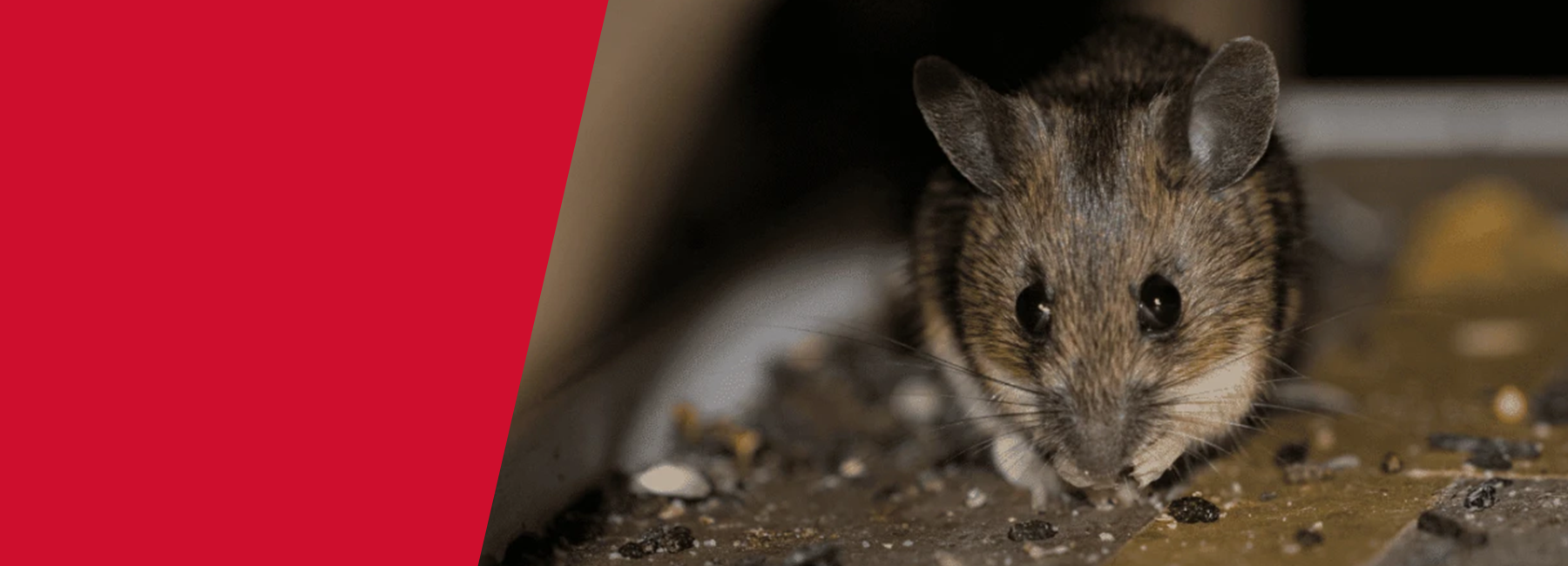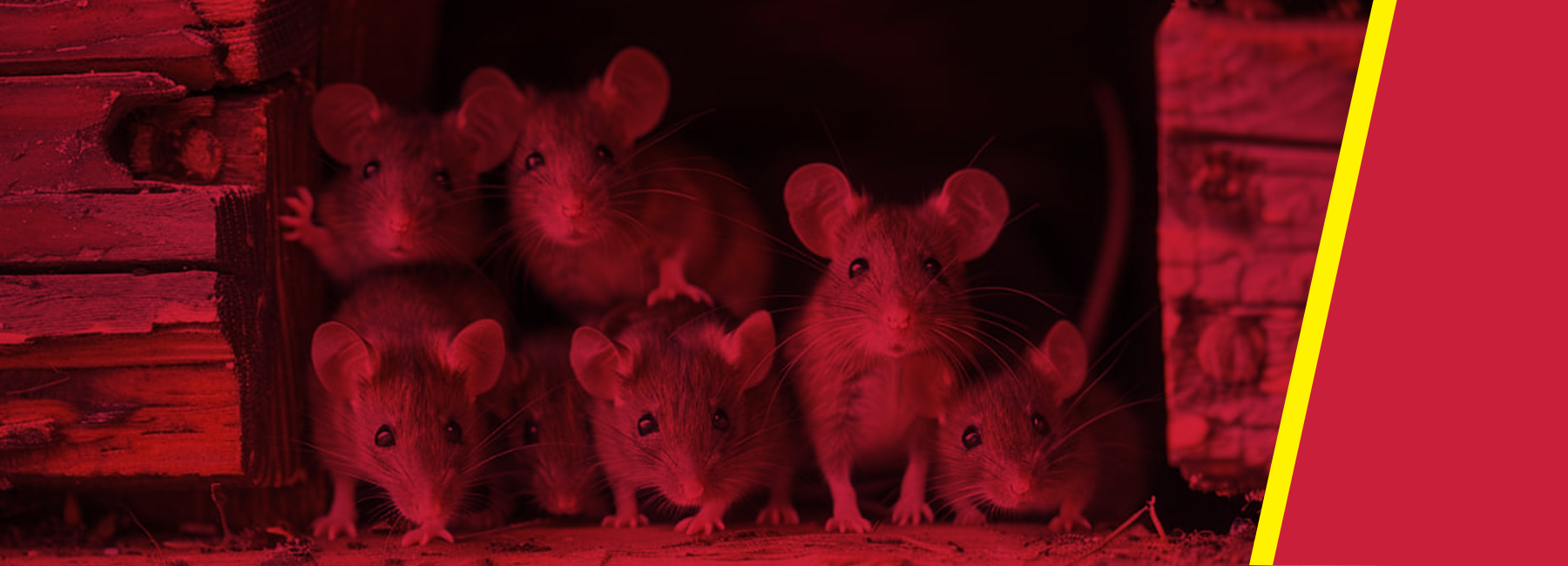
What Does Mouse Poop Look Like?
Identify Mouse Droppings & Stop Mice.

What Does Mouse Poop Look Like?
At Catchmaster, we always ask our customers, “What tipped you off to having mice?” Most often, they answer, “The smell.” That distinct, musty, ammonia-like odor comes from mouse urine—a substance that doesn’t just stain your insulation but also serves as a beacon, marking territory and attracting more mice to the area. This overpowering smell often prompts homeowners to investigate further, and the first visual confirmation of a mouse infestation is typically the discovery of mouse droppings.
Identify Mouse Droppings & Stop Mice.
At Catchmaster, we always ask our customers, “What tipped you off to having mice?” Most often, they answer, “The smell.” That distinct, musty, ammonia-like odor comes from mouse urine—a substance that doesn’t just stain your insulation but also serves as a beacon, marking territory and attracting more mice to the area. This overpowering smell often prompts homeowners to investigate further, and the first visual confirmation of a mouse infestation is typically the discovery of mouse droppings.
The purpose of this article is to guide you through what to look for once you suspect mice have moved in. It’s all too easy to confuse mouse poop with other debris—like insect droppings, dirt, soil, seeds, or even rat droppings. To confirm what you’re dealing with, it’s important to know exactly what to look for.
Your best bet for identifying mouse droppings is to examine their size and shape. Mouse droppings are typically small, dark, and shaped like grains of rice. If you discover droppings but realize they belong to insects or rats instead, don’t worry—Catchmaster has you covered with our professional-grade rat traps and insect traps.

Where Do I Look For Mouse Poop?
- Mice are creatures of habit, and their droppings often mark the areas where they feed, nest, or travel. Here are the key places to check:
- Kitchens and Pantries: Look near food sources, under appliances, inside cabinets, or along pantry shelves.
- Basements and Attics: Droppings commonly appear near stored items, insulation, or dark corners.
- Walls and Baseboards: Mice often stick to walls when traveling, leaving droppings along their paths.
- Hidden Areas: Be sure to check under furniture, behind boxes, and inside drawers for signs of activity.
Why Does Identifying Mouse Poop Matter?
At Catchmaster, we know that mouse urine is the first sign many people notice—its strong, ammonia-like odor is unmistakable and often leads to discovering an infestation. But it’s the droppings that provide concrete evidence of a mouse problem. Unfortunately, these droppings are also the primary carriers of disease, introducing serious health risks into your home.
Mouse droppings are known to harbor pathogens like Hantavirus, salmonella, leptospirosis, and lymphocytic choriomeningitis, as well as allergens that can trigger asthma. The more mice you have, the more droppings—and with them, the higher the risk of exposure to harmful particles. That’s why it’s critical to take immediate action to stop the problem in its tracks. Catchmaster’s professional-grade traps offer the mouse-stopping power you need to protect your home and family.
The Solution: Glue Traps & Snap Traps
Finding mouse droppings in your home is a sure sign of a mouse problem. Cleaning up the mess is only part of the solution—you need to address the infestation itself to keep mice from coming back. That’s where Catchmaster comes in. Our glue traps and snap traps are designed to stop mice in their tracks and prevent the problem from escalating.
Catchmaster traps deliver unmatched performance with:
Professional-Grade Glue: Trusted by pest control experts for over 70 years, our glue is powerful enough to stop even the trickiest mice.
Non-Toxic Formula: Safe to use in homes with children and pets, offering peace of mind.
Versatile Design: Whether you’re dealing with dusty, dry spaces or damp, wet areas, our traps work effectively wherever mice are most active.
Ultimate Mouse-Stopping Power: Featuring the industry’s strongest glue and upgraded snap traps that outperform outdated wooden models.
Place Catchmaster glue traps and snap traps along walls, near baseboards, and in corners where droppings have been found. Mice are creatures of habit, so targeting their travel paths ensures you’ll get the best results. With Catchmaster, you’ll take control and protect your home with confidence.
Catchmaster glue traps don’t just stop mice—they also trap the pathogens, allergens, and droppings they carry, sticking them securely to the glue surface. For the most effective results, we recommend alternating glue traps and snap traps along walls in rooms where you’ve spotted mice activity. Contrary to popular belief, mice are clever creatures, and adding variety to your control strategy increases your chances of a successful catch. With Catchmaster, you’re not just managing pests—you’re taking smarter steps to protect your home and family.
How Do I Safely Remove Droppings?
After you’ve ordered your traps, you should clean and disinfect all areas where you’ve found mouse droppings to protect yourself and your family from diseases. It is imperative that you do not use a vacuum cleaner to clean droppings because the high power suction can cause them disintegrate and blast the dust and pathogens into the air around you, increasing your risk. Follow these steps and precautions in this order when cleaning up mouse droppings:
- Protect Yourself: Get personal protective equipment – goggles, latex gloves, and an N95 mask if you have one, a surgical mask if you do not.
- Ventilate the Area: Ventilate the areas as best as you can. Open windows and vents, but do not use fans.
- Disinfect First: Spray the droppings and surrounding area with a bleach solution (1 part bleach to 10 parts water) or a disinfectant to prevent airborne particles.
- Clean Up: Use a paper towel or disposable cloth to pick up the droppings and discard them in a sealed plastic bag. Do not use a broom or vacuum cleaner.
- Dispose Properly: Place the sealed bag in an outdoor trash receptacle.
- Sanitize: Clean the area again with disinfectant to ensure no harmful residue remains.
How do I Prevent Mice From Coming Back?
A combination of exclusion, sanitation, and deterrence is key to preventing and managing mouse problems effectively.
- Seal Entry Points: Block gaps and holes using steel wool, caulk, or metal mesh; install door sweeps and weather stripping.
- Maintain Cleanliness: Store food in airtight containers, clean crumbs, and declutter indoor and outdoor spaces.
- Remove Attractants: Fix leaks, trim vegetation, and remove outdoor debris like woodpiles.
- Use Deterrents: Place Catchmaster’s glue boards in high-risk areas as a proactive monitoring and prevention tool.
- Monitor for Signs: Regularly check for droppings, gnaw marks, and nesting material.
Conclusion
Mice are more than just a nuisance they cause damage and carry illnesses and diseases. With the mouse-stopping power of Catchmaster’s glue boards and glue trays, you can eliminate not only the mice but also the secondary threats they bring, such as pathogens and parasites. Every trap is crafted with our legendary, 100% non-toxic glue formula, trusted by professionals for over 70 years.
Our glue boards are perfect for dusty, dry areas, while our glue trays excel in wet or damp environments—or if you’re unsure which option is best. Need help? Catchmaster’s unique chat functionality on our website connects you directly with an expert, ready to guide you on your journey to become a true Catch Master!
Key Takeaways
- House, Deer, White-Footed, and Field Mice are the most common varieties of mice found in homes around the USA
- Mice love basements – they are warm, safe, and usually have food, water, and places for making nests.
- Droppings, mouse fur, odors/stains in insulation, gnaw marks, nests, smudges on baseboards, or holes/burrows are all signs of a mouse infestation
- Glue boards are great for dusty, dry places; glue trays are better for damp conditions or if you aren’t sure exactly which trap is right for you
- Always wear personal protective equipment when disposing of spent traps and be sure to replace them so you can monitor for mouse problems and stop them before they start
Thanks for reading - you’ve taken
your first steps toward becoming a Catchmaster! Use code MOUSESTOPPINGPOWER at
checkout to save 15% on MaxCatch & Glouee Louee glue boards and glue trays.








